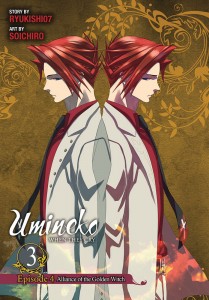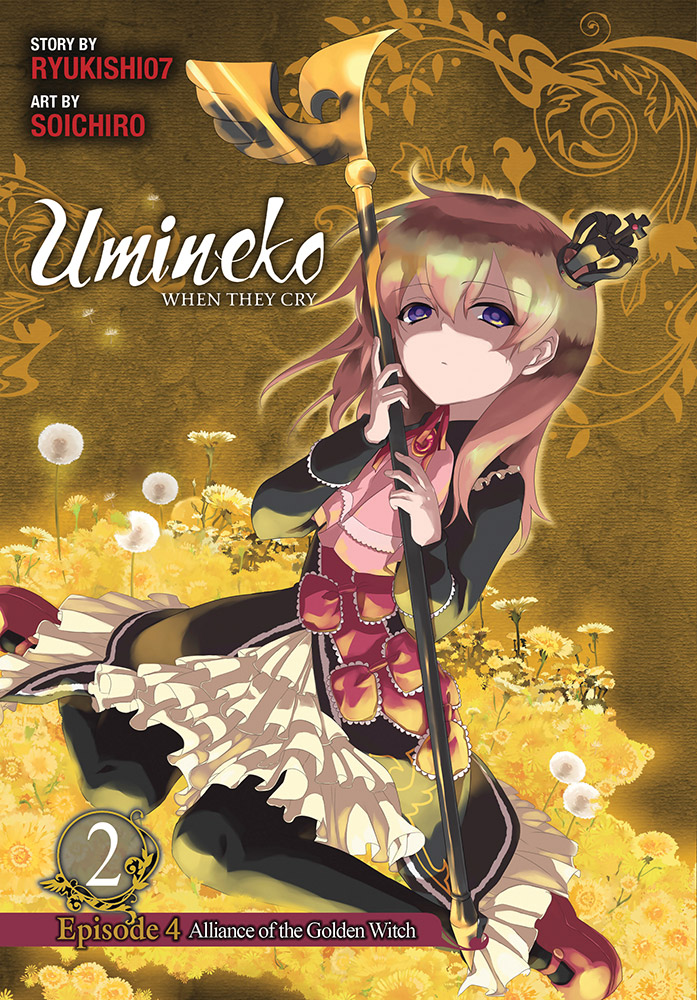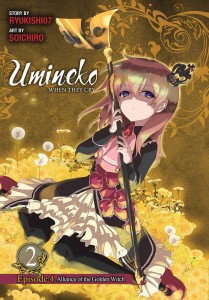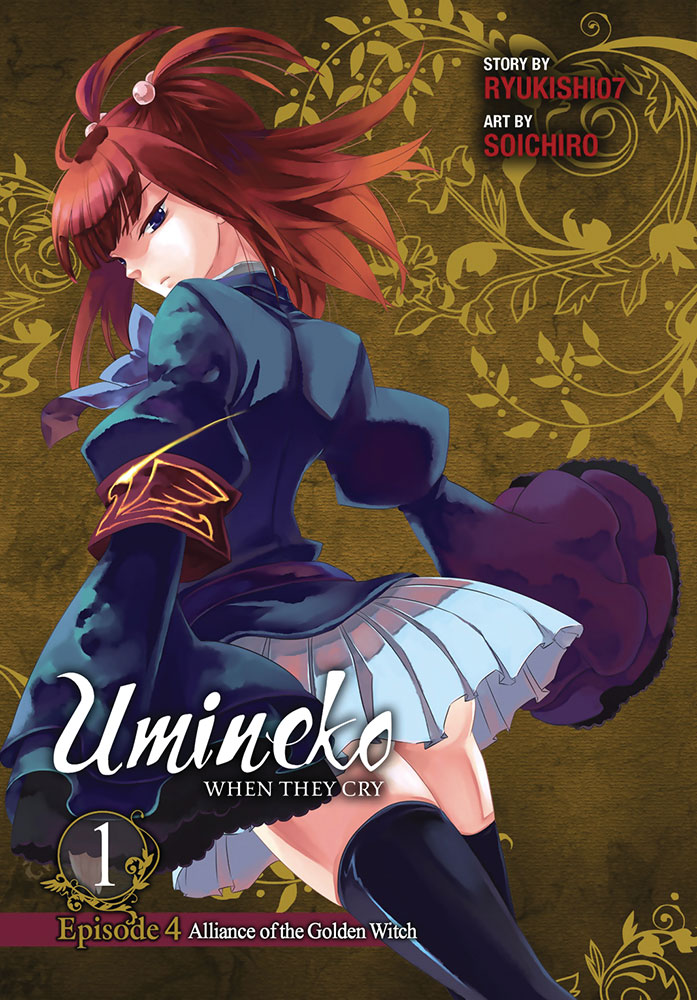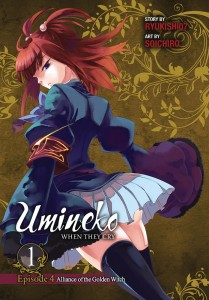Story by Ryukishi07; Art by Soichiro. Released in Japan in two separate volumes as “Umineko no Naku Koro ni: Alliance of the Golden Witch” by Square Enix, serialized in the magazine Gangan Online. Released in North America by Yen Press.
With this volume we are halfway through Umineko proper, at least in terms of arcs. Most of the major issues involved have become fairly clear to the reader. Battler’s incompetence as a detective is not because he’s stupid per se, but because he can’t see past the who and how to figure out the why. I think he finally manages to grasp this by the end of the book, but by then it’s a bit too late for Beatrice, who is a character whose ‘who’ and ‘why’ define her, to the extent that her dying wish to Battler is to uncover who she is. As for Ange, she figures out what’s going on, and learns how magic works, but her lack of empathy for Beatrice means that she fails here as well, and gets a highly grotesque death. The only real winners in this arc are Bern and Lambda.
There’s also the small matter of what’s happening on the “game board”, of course, in which the rest of the cast bar Battler are quickly polished off in an almost perfunctory way. You know things are ridiculous where Krauss fights a goat butler and wins. Actually, I’d argue that the manga didn’t go far enough here – the VN framed this as a long scene, showing off the goat butler’s ‘motivation’ and framing it as a video game with cliches piling up one on top of another. It was highly amusing, yes, but more to the point it shows off how overegged this pudding is. When first Jessica and then Kyrie take pains to tell Battler “you must believe in the witch god we were so wrong being all logical and stuff”, you’re meant to raise an eyebrow. Of course, with all the special effects death, magic is hard to deny. Assuming you can trust what you see.
The most important scene in the volume, which I also think the manga gives some short shrift to, is game-Beatrice asking game-Battler to remember his sin, and her complete devastation when he doesn’t. For Battler, 6 years ago is when he walked out on Rudolf, and all his theorizing about why that was wrong has to do with his place in the Ushiromiya family. Beatrice is clearly looking for something very different and more personal, and the fact that it meant so little to Battler that he’s forgotten it is what breaks Beatrice, both in the game and in meta. It’s telling that, since the whole Ushiromiya family thing is what he remembered, she takes that away from him by removing that identity. (This is where Battler truly is stupid – he knows his dad is a philandering ass, he should never have been taken in by her word games.)
So where are we now, with half the series gone? Beatrice is seemingly killed off. Battler can’t really escape the game. Everyone on the island is still dead. And even Ange is stated to have “died in 1998”, which is quite interesting given that the last we saw of her she was having the Seven Stakes of Purgatory brutally slaughter Kasumi and her yakuza goons. (Speaking of Ange, she starts to understand Eva a little better, though I worry she goes a bit too far. It’s a very hard line to walk between explaining and excusing child abuse, and I think Umineko sometimes walks across that line a bit too much.) And to no one’s surprise, Lambda and Bern turn out to be working together, or at least having mutually useful goals.
So Battler is an awful detective. Ange tried her best, but was too caught up in revenge and suicidal tendencies. Is there not a Great Detective who could possibly tell us what happened in Rokkenjima? Is there someone for whom this level of reasoning is possible? And can they actually be unbiased? Well, now I may be asking too much. In any case, May will bring us ‘End of the Golden Witch’, in which Beatrice’s tragedy reaches its inevitable conclusion. (No, it’s not the last arc.)

